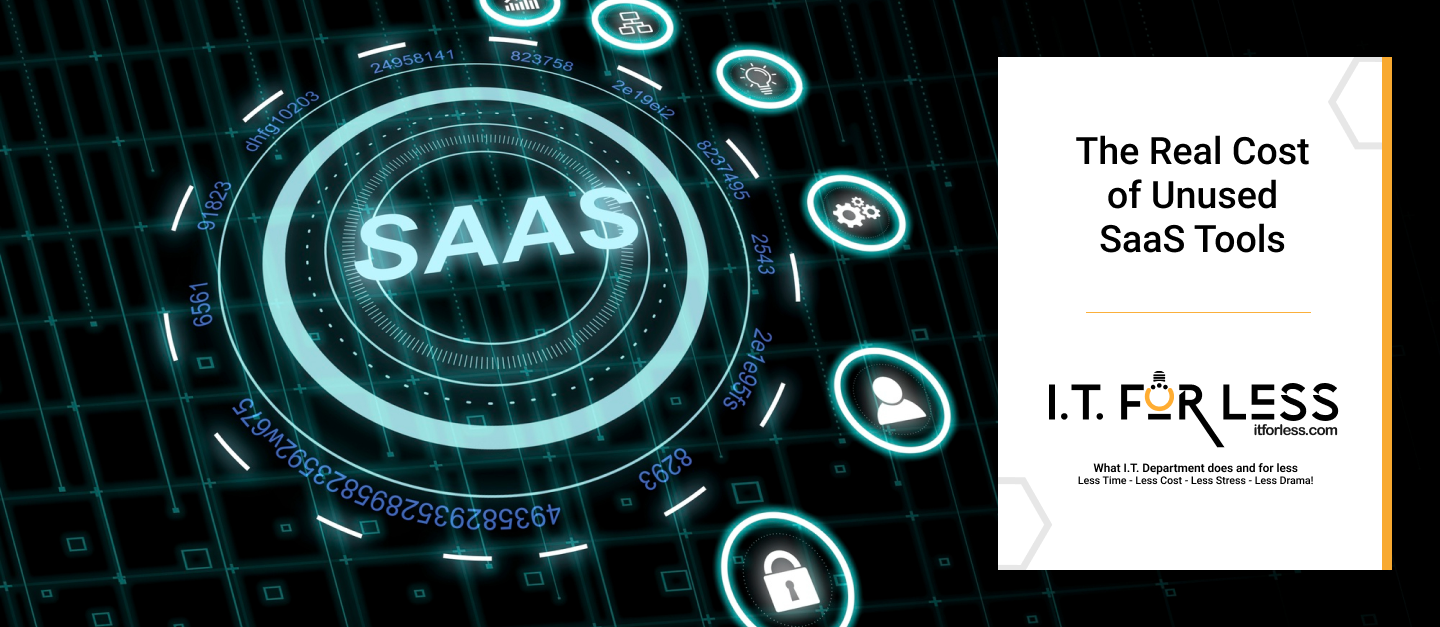In today’s digital-first world, companies rely heavily on Software-as-a-Service (SaaS) tools for every part of their operations — from communication and project management to HR, finance, and sales. But while SaaS adoption has skyrocketed, there is a hidden problem: the waste caused by unused or underused tools.
At I.T. For Less, we specialize in helping businesses reduce this waste. In this article, we break down the real cost of unused SaaS tools, how it happens, and how your business can reclaim wasted spending and boost efficiency.
The Scope of the Problem
According to industry studies, companies waste an average of 20–30% of their SaaS spend on tools that are either not used or barely used. For companies with multiple departments and dozens of applications, that could mean tens of thousands of dollars per year being drained away.
Let’s break it down:
- You have 100 employees.
- Each has access to 10 SaaS tools on average.
- Your company spends $40,000 per month on SaaS.
- 25% of those tools go unused.
That’s $10,000/month wasted — or $120,000 per year.
Where the Waste Comes From
1. Zombie Licenses
These are licenses assigned to employees who no longer use the tool — or have even left the company — but the company is still paying for them.
2. Redundant Apps
Multiple departments use different tools for the same function (e.g., two different project management platforms or video conferencing apps).
3. Overprovisioning
Companies often purchase more licenses than they need, anticipating growth that doesn’t happen or “just in case” usage.
4. Unused Premium Features
Many businesses pay for enterprise-level features that go completely unused. A cheaper plan would suffice.
5. Forgotten Renewals
Auto-renewals sneak up without review, causing companies to pay for tools that no longer align with their needs.
The Hidden Costs Beyond the Bill
It’s not just the subscription fees that hurt. Unused SaaS tools come with additional — and often invisible — costs:
1. Security Risk
Unused or unmanaged apps often go unmonitored, creating security vulnerabilities. Old accounts with access to company data are prime targets for hackers.
2. Compliance Issues
Tools that are forgotten or off the radar may not meet your industry’s compliance requirements. This can create legal exposure during audits.
3. IT Headaches
Managing unused or redundant tools creates extra work for IT teams — from password resets to access control.
4. User Confusion
Multiple tools for similar purposes lead to inconsistent workflows, lack of adoption, and reduced productivity.
Signs You’re Wasting Money on SaaS
- No one knows exactly how many tools you’re using
- You discover new tools every time you look at the budget
- Some employees use personal credit cards to buy software
- Your monthly SaaS bill is growing, but productivity isn’t
- You’ve never done a SaaS audit
If any of this sounds familiar, it’s time to take action.
How to Identify and Eliminate Unused SaaS Tools
1. Run a SaaS Audit
Start by listing every SaaS subscription your company pays for. Include who owns each tool, number of users, costs, renewal dates, and usage statistics.
Use a spreadsheet or a SaaS Management Platform (SMP) like Torii, BetterCloud, or Zluri.
2. Monitor Usage
Track how often employees log in to each app. If a tool is rarely used, it’s worth reviewing.
Some platforms provide built-in analytics. For others, request reports or use an SMP for insights.
3. Survey Your Teams
Ask employees which tools they use — and which ones they can live without. You’ll often uncover redundant or low-value apps.
4. Consolidate Similar Tools
If your company uses three different task managers, consider standardizing one. This saves money and simplifies training.
5. Right-Size Your Licenses
Adjust your license counts to match actual usage. Downgrade infrequent users to lower-tier plans or shared access (when compliant).
6. Cancel What You Don’t Need
This seems obvious, but it’s often overlooked. Don’t be afraid to cut the cord on tools that no longer serve you.
7. Set Renewal Alerts
Create a centralized calendar or alert system to stay on top of auto-renewals. This gives you time to evaluate before committing.
Pro Tip: Work with a SaaS Optimization Partner
At I.T. For Less, we do more than identify waste. We help you build a lean, secure, and productive SaaS environment.
Our services include:
- Comprehensive SaaS audits
- Usage and cost analysis
- License optimization and downsizing
- Shadow IT detection
- Renewal management
Let us help you eliminate waste and get more from your tools.
Final Thoughts
Unused SaaS tools are more than just a line item — they’re a silent drain on your budget, your security, and your productivity. The good news? You can take control.
With regular audits, smart usage tracking, and a strategic SaaS management plan, you can eliminate waste and turn your software stack into a well-oiled machine.
Ready to clean up your SaaS stack and save money?
Reach out to I.T. For Less for a free consultation today.
📧 Contact us | 📞 Schedule a Free Consultation | 🌐 www.itforless.com
